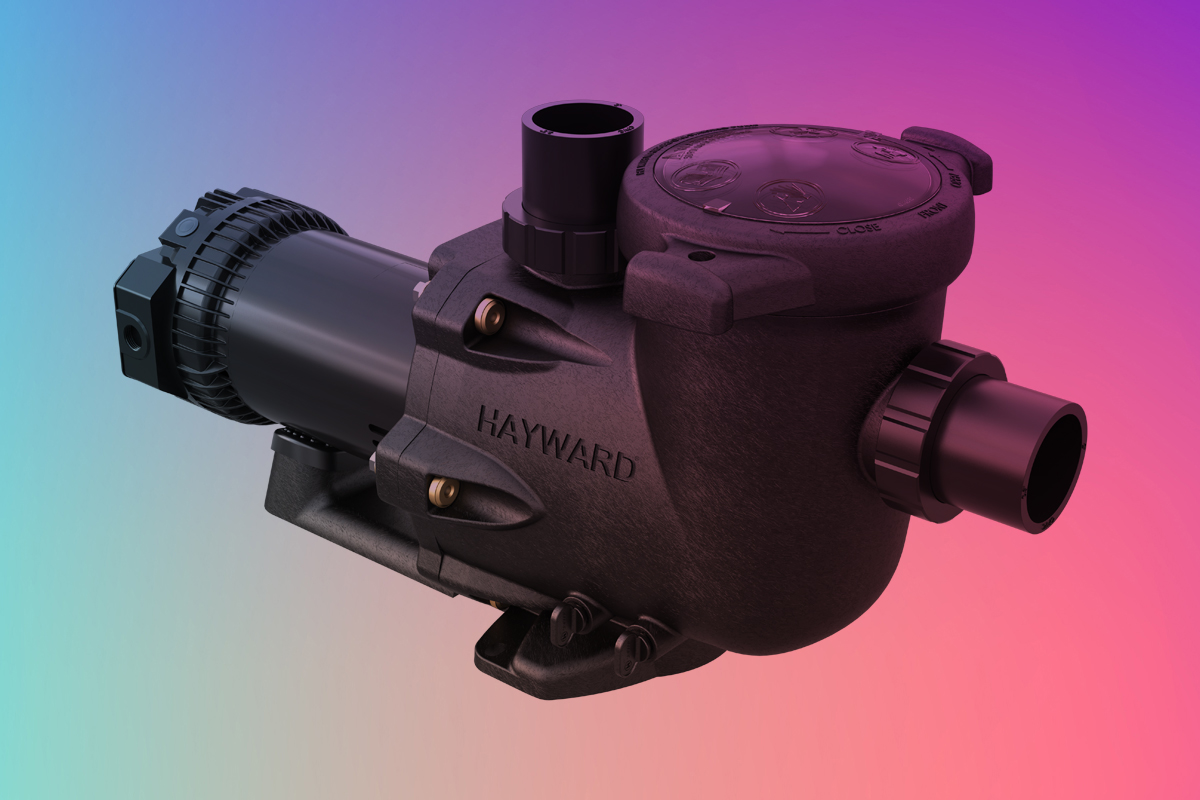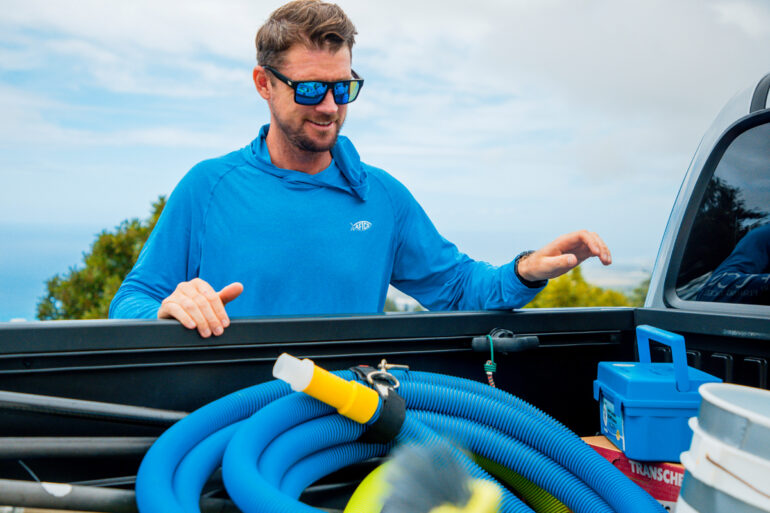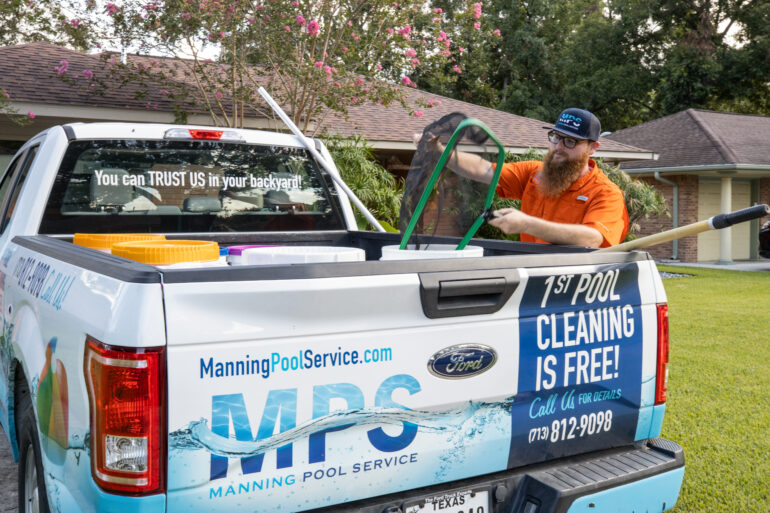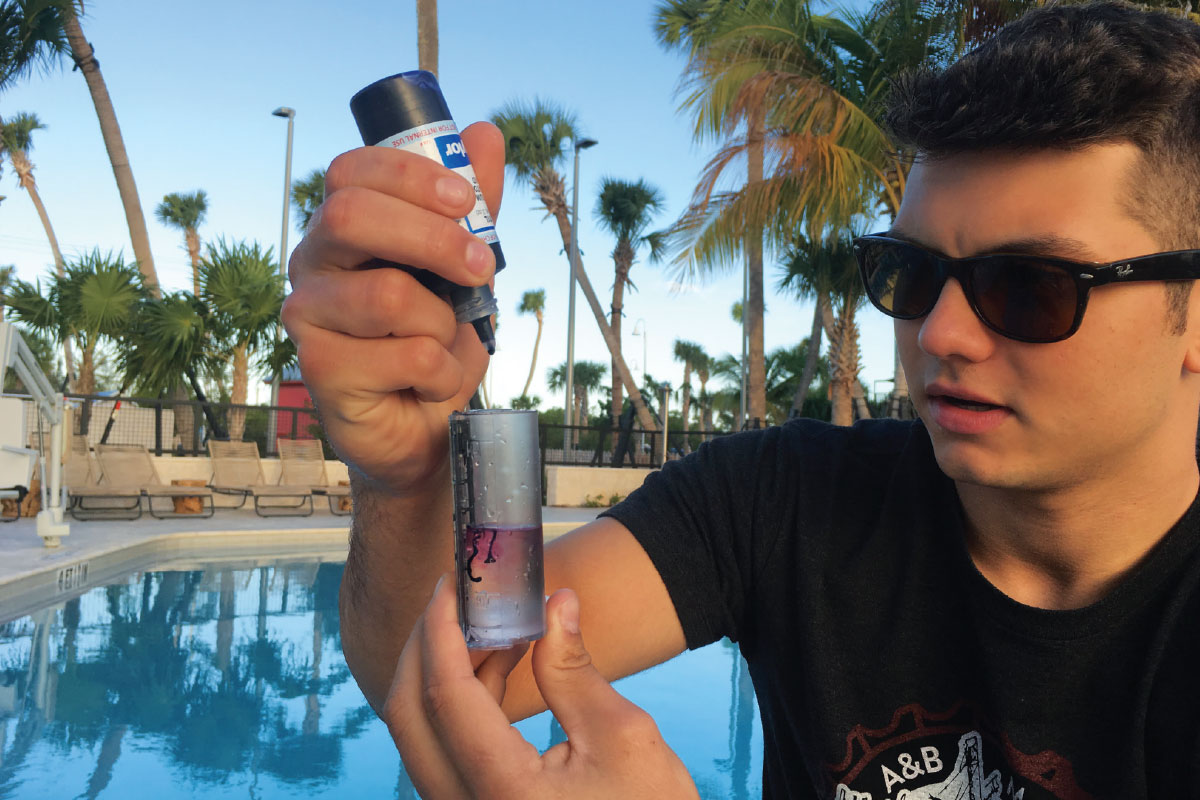Operator Hacks
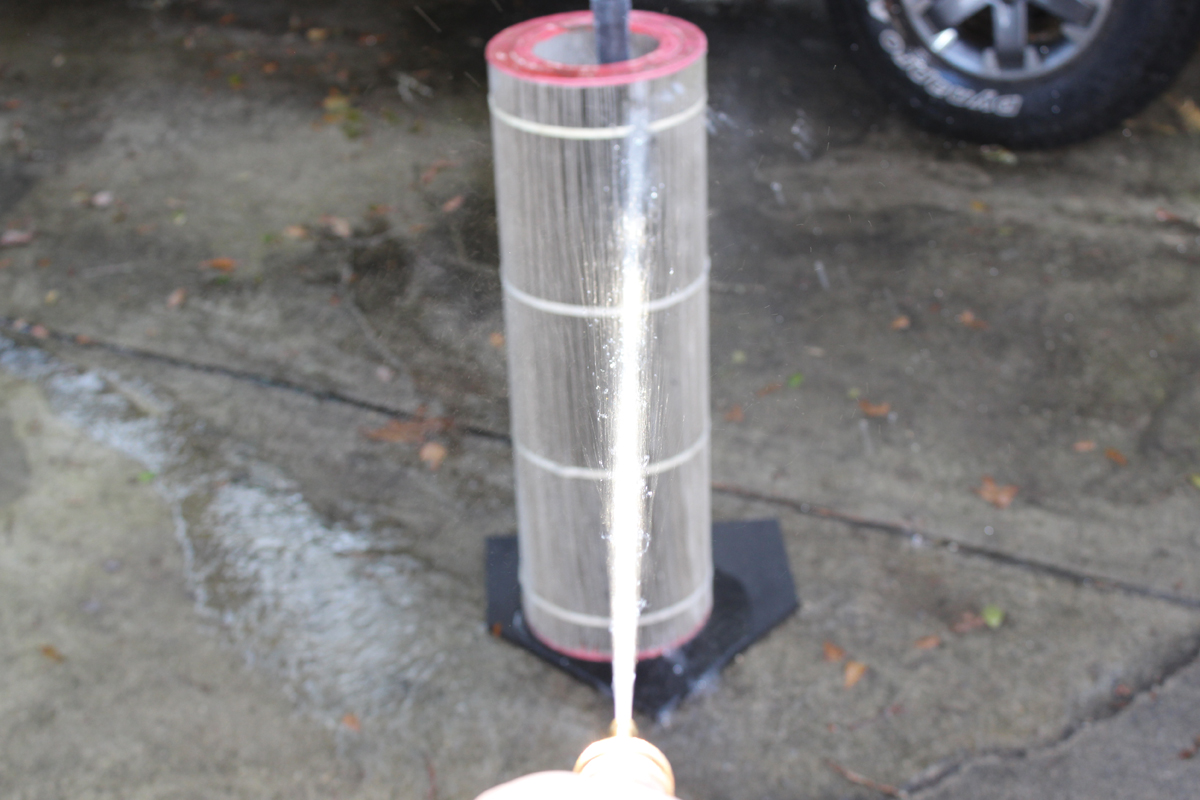
National Pool Opening Day was April 24, and because we are in active pool season, I thought it would be cool to share more pool service hacks. If you have any you’d like to share, send them to editorial@kedrickcontent.com with Hacks for Rudy in the subject.
Tee Up
I always used a brass jet sweeper nozzle for my normal pressure up 8-PSI cleanings, but it would drive me nuts when the hose’s pressure would topple the cartridge over and into the dirt. To keep it in place, I picked up a batting tee, which did the trick. Just drop the element over the tee’s tube, and it remains upright throughout the entire process. Voilà!
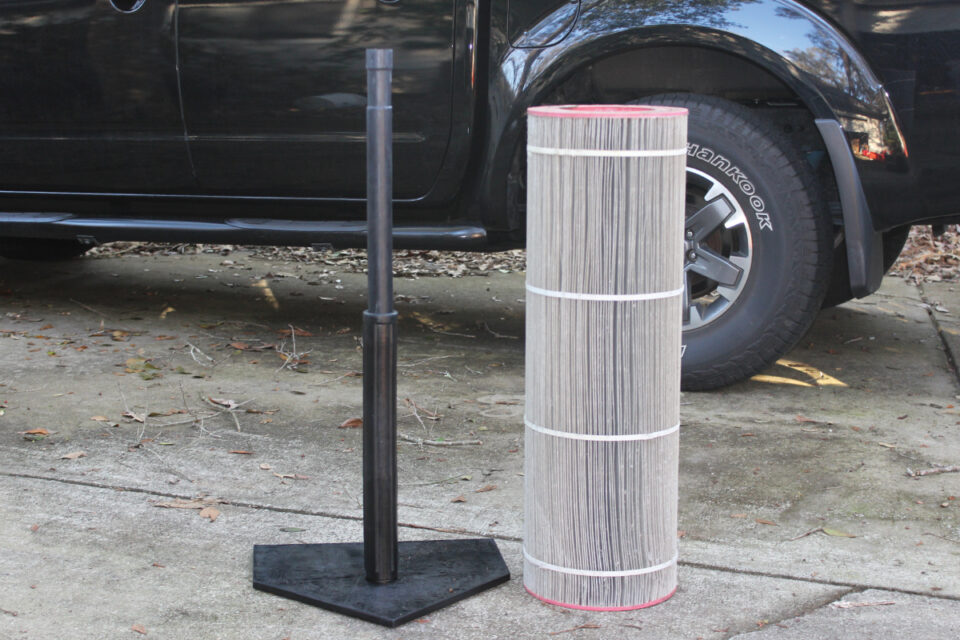
Put filter cartridges on a batting tee to keep them upright during cleaning. 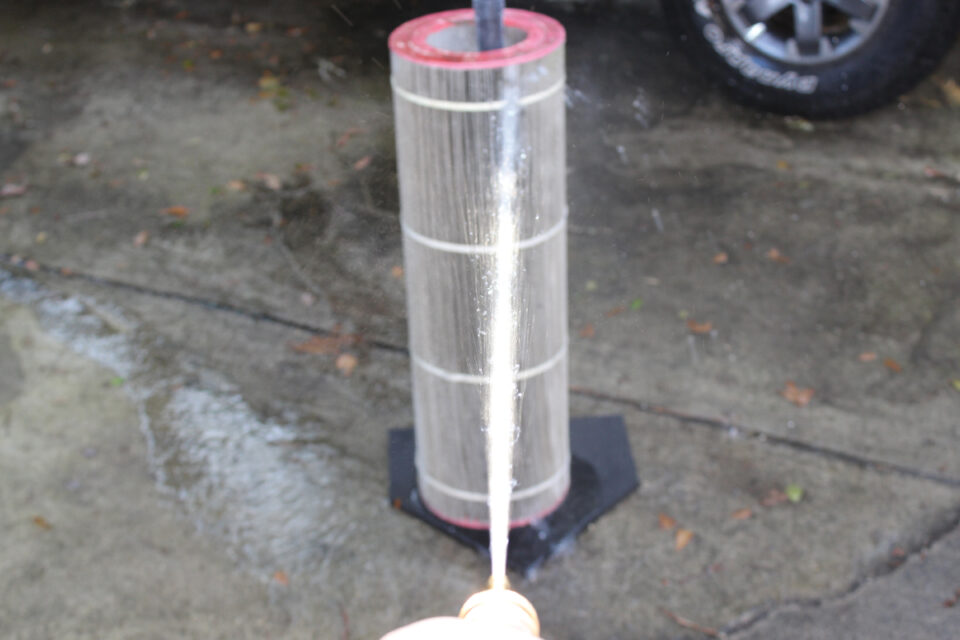
Put filter cartridges on a batting tee to keep them upright during cleaning.
Cut Grease
You may not realize how much money you’re spending to clean filters. There will come a time when you’ll need to soak your cartridges in a degreaser to rid them of oils if hosing it off won’t work or before a dip in diluted acid. But before there were cartridge-cleaning solutions, there was trisodium phosphate (TSP).
This one comes down to cost. How much savings depends on the frequency of cleanings and the number of cartridge filters you have on your route. I know there’s liquid dish soap, and I’m going to talk about that, too. Each of the solutions will do as good a job as the other.
If we used a 32-gallon trash pail at 27 inches high, then tapered down from 24 to 22 inches, that would be a good enough size to submerse a fair amount of the elements on the market.
Average cartridge cleaning solution at a dose of 4 ounces per gallon and a cost of $31.99 per half-gallon of cleaner puts the price at $64 per cleaning. Dish soap at a dose of 8 ounces per 5 gallons and a cost of $6.30 per quart, lands at $20 per cleaning in our 32-gallon pail. Then, TSP at a dose of one cup to 5 gallons water, and a cost of $23.50 per 4.5-pound container has a total cost of $16 per pail of cleaning solution — a savings of 75%.
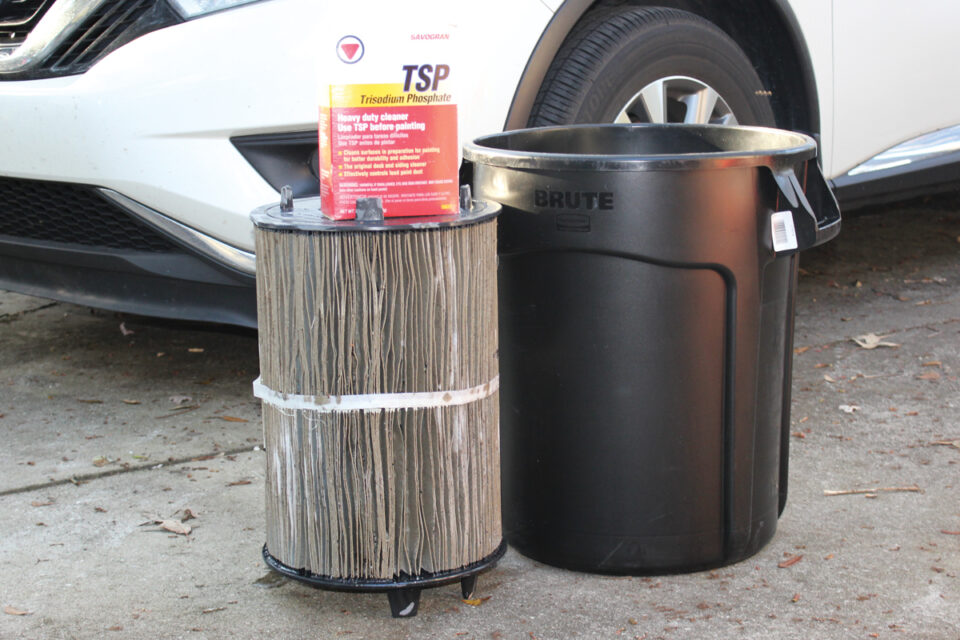
TSP is the most cost effective way to degrease filter cartridges. 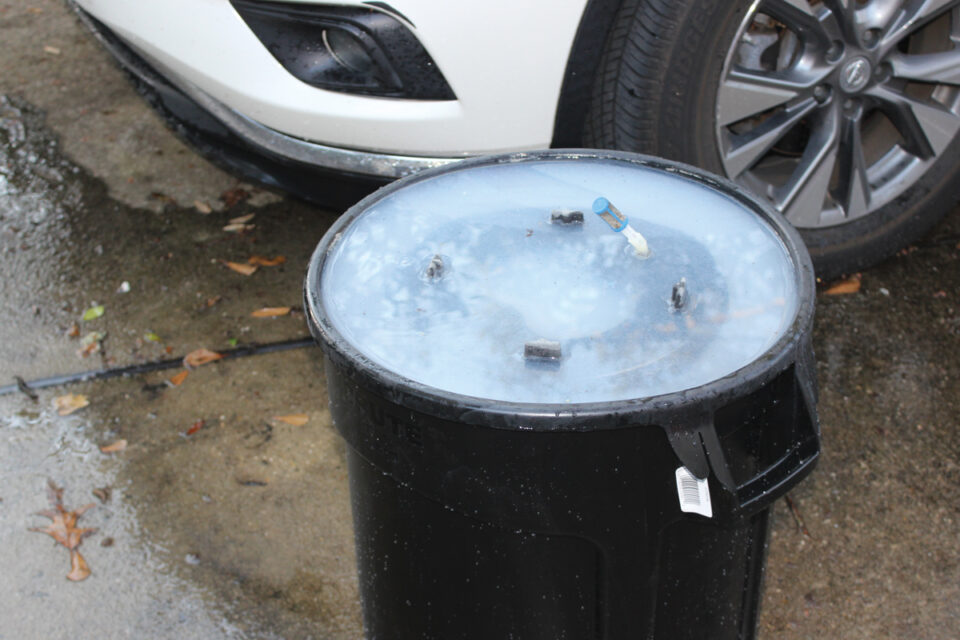
TSP is the most cost effective way to degrease filter cartridges.
Alum-inating
I can tell you this — at least one major cartridge element manufacturer still lists TSP as one of the recommended cleaning methods, and it, as well as dish soap, is available phosphate-free.
However, if you are battling phosphates in pools, aluminum sulfate (alum) is an alternative to lanthanum-based phosphate removers. Alum removes phosphates just as well and at a fraction of the cost. That is one of the reasons municipalities prefer it in water treatment.
A 50-pound bag of aluminum sulfate will cost you roughly $30, and at a dose of 4 pounds per 10,000 gallons of water, you’ll have a cost of $2.40 per 10,000-gallon treatment. Of course, you’ll be vacuuming to waste the next day versus multiple filter cleanings over the next week. Alum is also a bit more temperamental about pH and water temperature, but due to the ‘floc’ formation, the aluminum is removed after it has been vacuumed out.
Steamy Swim
By mid-August when the pool’s water temperature is greater than 90°F and too hot for alum, your customers might be complaining the pool is no longer refreshing. They may say it feels like bathwater, then ask you about large ice quantities. Back in 2018, Sharon Osbourne let the world know on Twitter that Ozzy had done just that. The former Black Sabbath vocalist added 3,000 pounds of ice to his swimming pool during a heatwave, and it brought the temperature down exactly 3°F.
Three-thousand pounds of ice in a 20,000-gallon swimming pool sounds like a lot, but that’s only because it is not an apples-to-apples comparison. It’s like multiplying yards by feet; it just doesn’t work. To see why the temp drop was minimal, we calculate the weight of the water. At 8.33 pounds per gallon, a 20,000-gallon pool holds 166,600 pounds of water. This gives a better picture of why 3,000 pounds of frozen water will not make a dent. (FYI — I did guess at Ozzy’s pool size. I think Christina Aguilera owns it now; we’d have to call her to get the actual gallonage. That is, unless someone reading this happens to know.)
A better solution to a higher-than-wanted water temperature may be to look at the customer’s roof. If there is a solar heater for the pool up there, it can help take a bit of the edge off. Changing the system’s run time to operate at night versus daylight hours will enable the unit to cool the water slightly. You’ll not get miracles, but it will likely be a noticeable difference.
Quick Hacks
Accidentally break the grease cup off a Jandy three-way valve and don’t have a replacement in the truck? A 1/8-inch NPT pressure gauge will work in a pinch.
A Polaris 280’s wheel screw that breaks off flush can easily be removed with a flathead screwdriver. Heat the tip cherry with a Bernzomatic Brass Pencil Flame Torch, and melt the screwdriver into the severed plastic shaft. Cool it quickly with a water spray bottle, then unscrew the piece of C55. Obviously, you’ll need to use a screwdriver with a head no larger than the shaft’s diameter. Skimmer baskets with missing handles are annoying. But skimmer basket handles weren’t always made of plastic; manufacturers used to use brass welding rods. You can still get 20 welding rods for about $30. You can even get them in aluminum if you don’t like brass. Just run it through and across the top of the basket and cut to size with a pair of dikes.
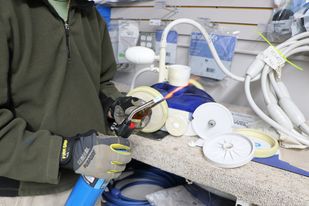
Derrick Todd uses a welding heated screwdriver to remove wheel screws that are sheered off and flush. 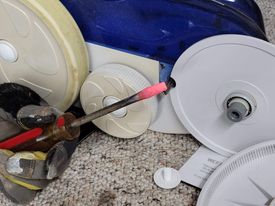
Derrick Todd uses a welding heated screwdriver to remove wheel screws that are sheered off and flush.

